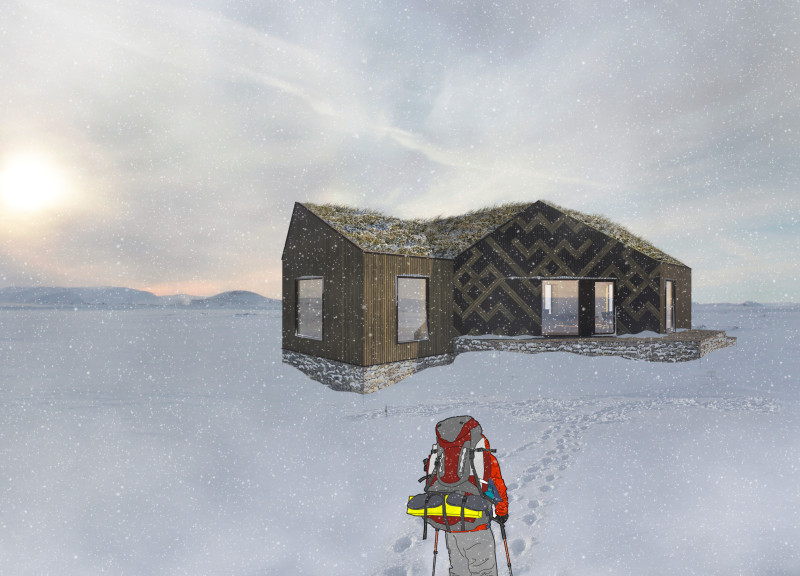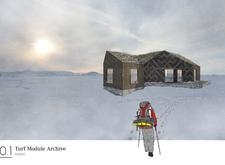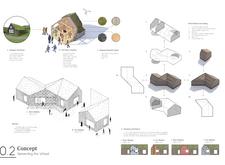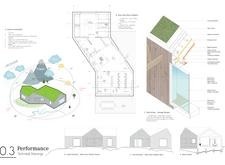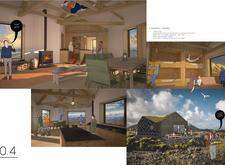5 key facts about this project
At a glance, the architectural form of the Turf Module Archive comprises a series of interconnected modules that create a cohesive and functional structure. The modules are designed to serve various purposes, including living, dining, and administrative areas, allowing for an adaptive use of space that can accommodate different activities and group sizes. One of the most striking features of the project is its turf roof, which not only pays tribute to Icelandic building traditions but also contributes to the sustainability of the structure. This green roofing enhances thermal insulation and fosters local biodiversity, making it a practical choice for the climate.
The exterior of the Turf Module Archive features a combination of materials that support its aesthetic and functional goals. Dark wood cladding is utilized to evoke the warmth and texture reminiscent of traditional turf houses, while large windows provide ample natural light and connect the interior spaces with the breathtaking landscapes of Iceland. This emphasis on natural light is intentional, serving to create an inviting atmosphere that encourages interaction among users and fosters a sense of community.
Sustainability is a core principle woven into the project’s design. It employs local materials, such as stone for foundational elements and cellulose insulation to ensure energy efficiency. The incorporation of solar panels serves to harness renewable energy, while a rainwater collection system maximizes natural resources. These design choices not only reduce the environmental impact but also create a building that harmonizes with its surroundings.
Unique design approaches are evident in the project's modular layout. Each module is designed with flexibility in mind, enhancing adaptability for various uses and accommodating changing needs over time. This modular system allows the Turf Module Archive to function effectively as both a communal space and a private retreat, embodying a modern approach to space that prioritizes user experience and versatility.
The thoughtful organization of spaces within the Turf Module Archive reflects a deep understanding of human interaction and community dynamics. The communal living area fosters social engagement, encouraging collaboration and connection among users, while the private sleeping quarters provide necessary respite. This balance of communal and private spaces is indicative of a user-focused approach to architectural design.
In summary, the Turf Module Archive exemplifies a sincere commitment to honoring Icelandic heritage while incorporating contemporary principles of sustainability and flexibility. Its design decisions enhance the overall function and experience of the project, making it a valuable addition to the architectural landscape of Iceland. For those interested in exploring this project further, details such as architectural plans, sections, designs, and innovative architectural ideas can provide deeper insights into its development and execution. Exploring these elements may enrich the understanding of how traditional architectural forms can be successfully reinterpreted in a modern context.


